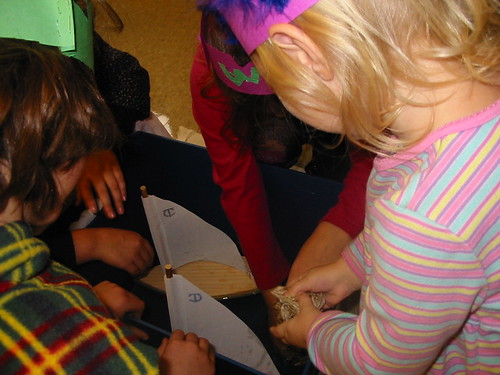Being responsible for a child’s education seems scary on its face, but with the proper support and information, homeschooling isn’t necessarily all the hard. You can protect your children’s safety and give them a great education by teaching lessons at home. The following article will give you the tips you need to get started.
Homeschooling a child when you also have a baby can be very difficult. You need to set up specific times to address each child’s needs. Look for age appropriate activities for both of your children. Look for opportunities to get your children to interact with each other but do not force them to spend time together.
Art can be used throughout all subjects. Let children draw what they have learned, or even paste together a mosaic. They can sculpt, act, sing – the limits are only your imagination! Immersion is the best way to foster a healthy learning atmosphere.
Check the Homeschool Association within your state to be informed about the governing laws and guidelines surrounding your decision to homeschool your children. You may be shocked by your state’s requirements. Most states require that you notify them and file certain paperwork with them if you intend to homeschool.
Know what the homeschooling laws in your state are. You can visit the HSLDA’s website to find out about your state’s laws. Being a member of a local organization can be helpful if you run into trouble with a Board of Education or CPS. This will provide you with assurance, but it does cost money.
List all of the good things and all of the bad things about both public school and home school, then compare them. This list can be a valuable aid in crafting lesson plans, as you can make up for deficiencies in the public school curriculum. It’s basically a checklist of various situations you want to avoid to help you focus on the best possible learning. Make sure that you store this list and look back at it when necessary.
Allow your child to have breaks that allow them to exercise and get rid of some excess energy. This will prevent restlessness and also help your children focus on schoolwork. When planning lessons, schedule your break times. Let your child know when their scheduled breaks are coming up.
When homeschooling, don’t neglect your children’s life skills education. So, make sure to include life skills in your lessons along with academic lessons. Everyone understands academics, but life skills like balancing a budget or cooking a meal are also important. It is possible to teach them together. Why not take them grocery shopping so they can learn about inflation and taxes?
Write down you rationales. The reasons you want to educate your own kids may seem clear in your head, but it may not fully make sense to you (or your partner/spouse) until it’s in writing. Make understanding what you want to accomplish a priority, and be able to verbalize it when people ask about your decision to homeschool. It will lessen the stress you feel when talking with other parents about your decision.
Are you qualified to teach your children at home? Think about the relationship that you currently have with your children; sit down and iron out any problems prior to homeschooling.
Homeschooling can be tense sometimes because of your family relationship. Try leaving “home” issues out of class. If things happen to become particularly tense, you have the flexibility to take a break. This is helpful for your child as well as you.
Try to split up some of the children’s activities outside of the classroom with your partner, to help make your life a little easier. Your partner can take your kids to clubs and sports events, for example. As a homeschooler, you are with your kids all day, so making sure you get a little quality time is important.
Try to be patient with your kid when you’re teaching. This is essential because during the times you become frustrated, it is best that your child does not notice this. Giving your child positive reinforcement regularly will help them stay motivated and full of confidence.
There is more to your lesson plan than books. These things are only tools, nothing more. Find some other tools and methods you can use, such as experiments, field trips or creative activities. The ability to customize is one of the many blessings on homeschooling.
Look for ways to teach your child to become independent in his learning. It is not necessary to hover over your child to watch every move they make. Let them know your expectations, then, at times, take a step back and let them learn on their own. Doing so provides confidence and independence and helps avoid procrastinating.
Learning more about homeschooling will give you the confidence you need to begin. Your children will really have the best teacher, one who truly cares about their education. Implement these tips to provide a great education. They deserve the best.

